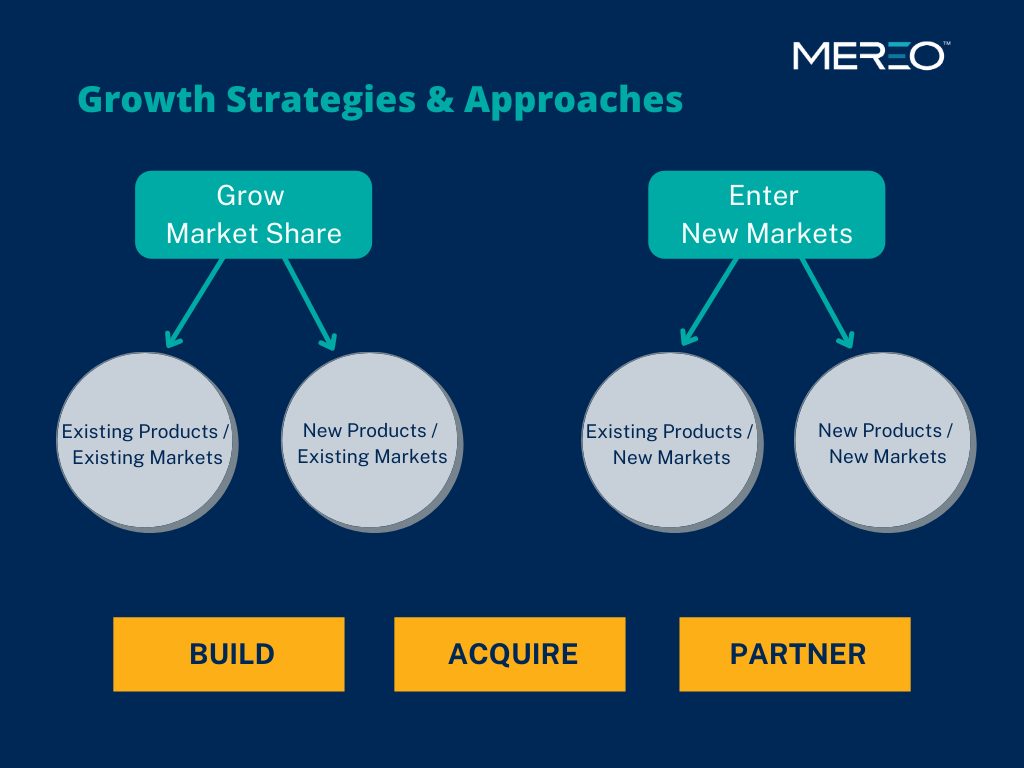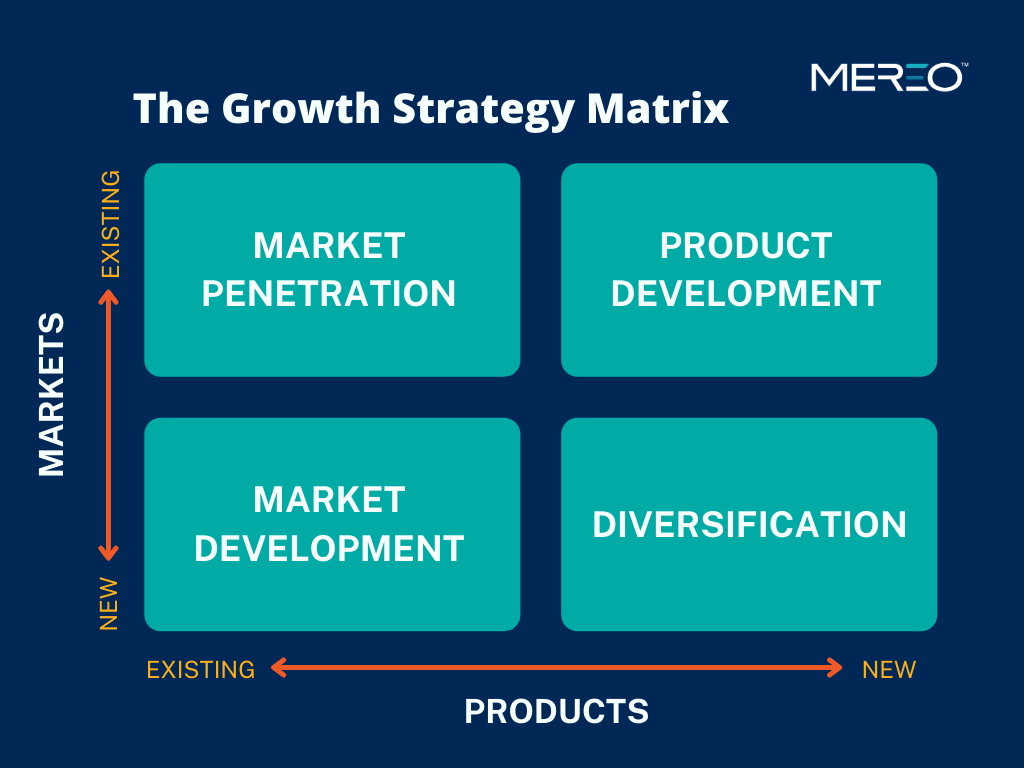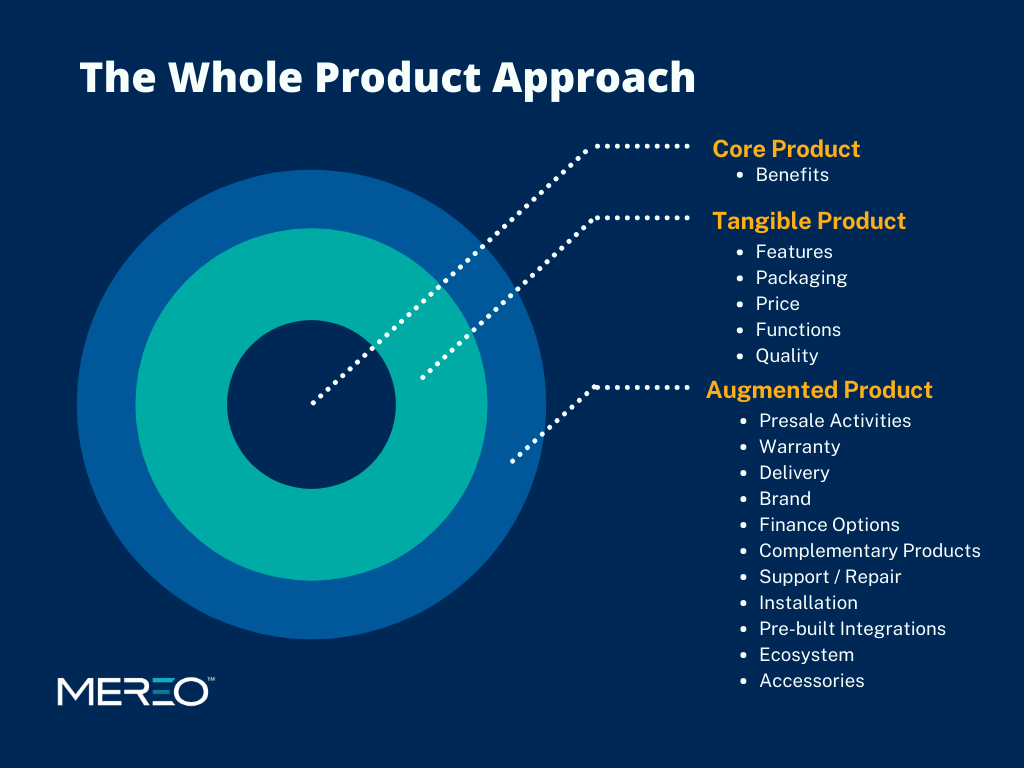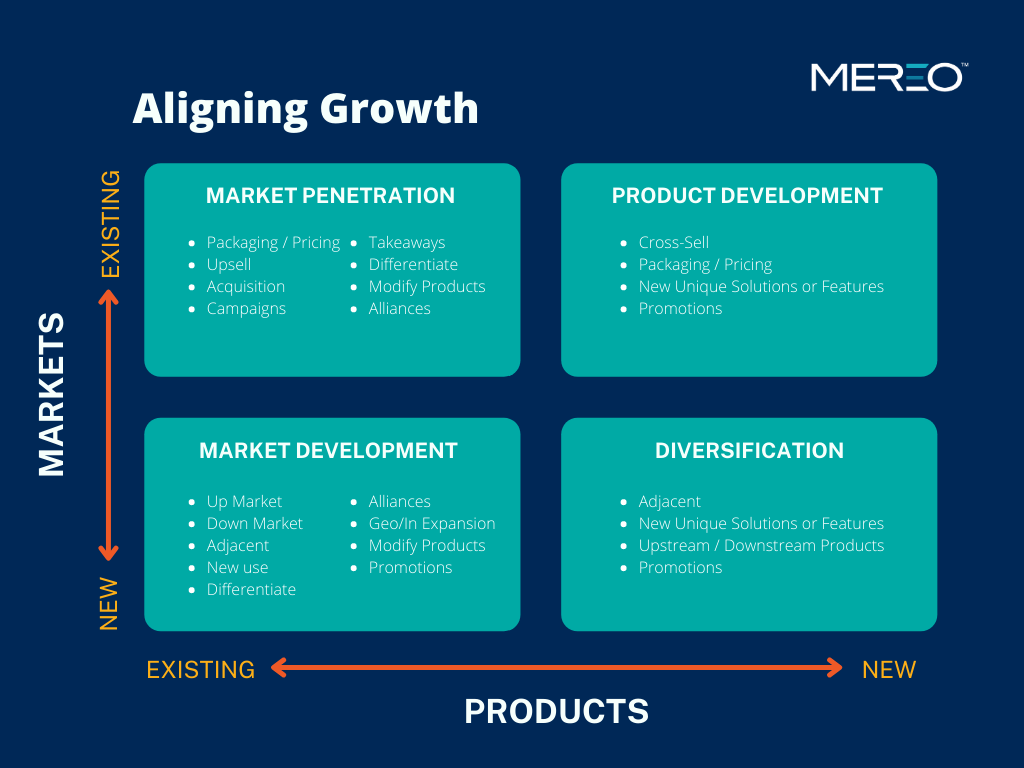Can you recall a couple of years ago when Google was hyping its Google Glass? This thing looked straight out of the future: a wearable computer with a head-mounted display—a “hands-free smartphone.” Your pair are surely next to your keyboard. Oh wait, you in fact did not buy a pair? Me either. Actually, hardly anyone bought the pricey new gadget before it was pulled from the market and deemed a failure. While a unique product, this is not an unusual product management growth (or lack thereof) story.
According to Harvard Business School professor Clayton Christensen, each year more than 30,000 new consumer products are launched — and 80% fail. Nielsen has found consumer product flops at more than 85%.
If growth by introducing a new product is incredibly risky (and it is), what better options are available to your B2B organization product management team then?
Focus on market — not product — for more-sustainable growth.
A more strategic approach to organizational growth comes from markets, not products — by growing share of existing markets or entering new ones altogether. As a base of growth, most companies want to retain existing revenue — securing their base buyers as a foundation for growth and building upon that by tapping into additional wallet share from the aforementioned buyers. A natural progression companies follow is to target and win new accounts and expand certain products into new regions, where they have a smaller market penetration.
These strategies can be approached in one of three ways:
- Organically create solutions.
- Acquire the solutions or technology.
- Partner with others to build and/or sell the solutions
Understand your solution strategies — and where your current offerings and capabilities allow you to explore and expand.
Another way to think about these options is in a simple quadrant called the Ansoff Matrix. This common approach has been used since 1957 to organize and define product and market growth strategies into four fundamental sectors:
1. MARKET PENETRATION GROWTH STRATEGY
What: The process of entering an existing market in which there are current or similar products and taking market share from the other competing companies.
Pros: This is the most common growth strategy and usually the lowest risk of the four options because the need is validated already.
Cons: The greatest challenge is mindshare and differentiation to get your fair share, and it puts a premium on out-executing the competition.
2. MARKET DEVELOPMENT GROWTH STRATEGY
What: The process of identifying and developing new opportunities to sell existing products in previously unexplored markets (e.g., new industries or new geographies).
Pros: Assuming your company is happy with your current products/services, this is the logical and lower risk strategy for expanding your customer base and increasing revenue.
Cons: Companies often underestimate the level of effort for success. For example, entering a new geography may require product changes, expansion of service and support capabilities, branding initiatives, partnership development, and initial promotional expenditures.
3. PRODUCT DEVELOPMENT GROWTH STRATEGY
What: The process of identifying and developing new products to sell to markets where you already have experience and success.
Pros: Assuming your existing customers have a positive view of your solutions and experience, they are much more likely to engage in both input on solution development and entertain your prospecting initiatives.
Cons: New product development always carries a risk and is highly dependent on your understanding of the customers/market need, your ability to execute, and your overall speed to market.
4. DIVERSIFICATION GROWTH STRATEGY
What: The process of adding new products in new markets.
Pros: This strategy can help extend reach, offset risk or seasonality, boost brand image, or possibly differentiate and improve competitiveness.
Cons: This is the highest risk area not only because of the inherent risks associated with developing new products but also because of lack of experience working within the new market. When a company chooses to diversify, they knowingly put themselves in a position of great uncertainty. For these reasons, it is recommended that a company should only pursue a diversification strategy when the current product or current market no longer offers opportunities for further growth.
As a leading practice, companies should look at their solution strategy and investments and map them across a matrix like this. They should take a moment to evaluate the results asking questions such as: Are all the investments in one quadrant? If so, is the company at risk by not diversifying? Does the growth risk approach align with the company’s risk profile?
Embrace the ‘Whole Product’ approach.
Most importantly, your company needs to perform due diligence when considering methods for engaging in promising solution growth strategies. Many businesses fail by only considering growth via research and development investment — while not taking into account a Whole Product approach.
The Mereo Whole Product approach supports product managers in considering a core product and augments it with everything a buyer needs to have a compelling reason to buy. It considers that research and development is only one of many investment options to drive growth.
The core product is the benefit received by the solution and is complimented by the tangible product and augmented product that create the entire buyer experience.
So if we now look back to the Ansoff Matrix, we see that we can spread our research and development bets by utilizing marketing promotions and campaigns, partnerships, packaging and pricing — to name but a few approaches.
Achieve sustainable revenue performance.
In a highly competitive and uncertain market environment, diversification is critical — and broadening one’s approach to diversification can enable a company to stretch over-taxed research and development.
Mereo works with B2B organizations to create new “muscle memory” with simple and lightweight approaches to challenge harmful solution management status quo.





